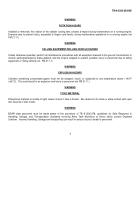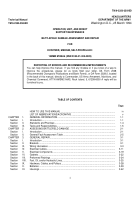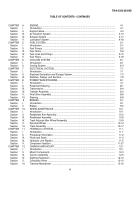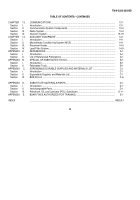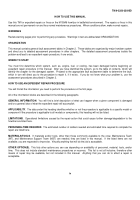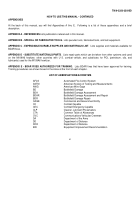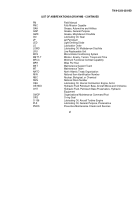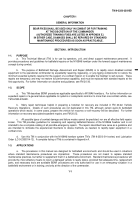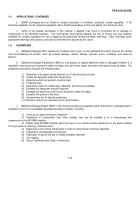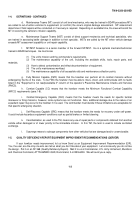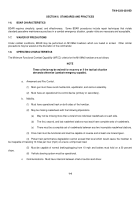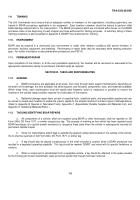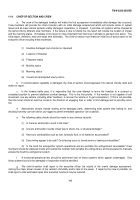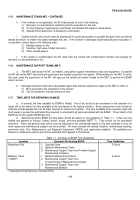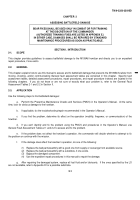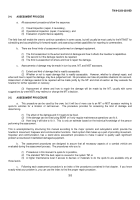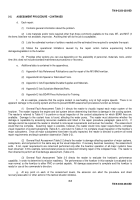TM-9-2350-358-BD - Page 17 of 343
TM 9-2350-358-BD
1-4.
DEFINITIONS - CONTINUED
d.
Maintenance Teams (MT) consist of unit level mechanics, who may be trained in BDAR procedures MTs
are called to out-of-action vehicles to supplement (or confirm) the crew’s original damage assessment.
MT assessment
determines if field repairs will be conducted or if recovery is required.
Depending on available time, the crew will assist the
MT in restoring the vehicle to mission capability.
e.
Maintenance Support Teams (MST) consist of direct support mechanics and technical specialists, who
are trained in assessing battle damage in addition to their specialty.
MSTs are called by the MT when vehicle damage
exceeds MT assessment capability or unit repair capability.
f.
MT/MST Assessor is a senior member of the forward MT/MST.
He is a systems mechanic/technician
trained in BDAR techniques.
He must know:
(1)
The unit’s mission and the commander’s requirements.
(2)
The maintenance capability of the unit, including the available skills, tools, repair parts, and
materials.
(3)
How to detect contamination and effect decontamination of equipment.
(4)
The unit’s maintenance workload.
(5)
The maintenance capability of all accessible rally and maintenance collection points.
g.
Fully Mission Capable (FMC) means that the howitzer can perform all its combat missions without
endangering the life of the crew.
To be FMC the howitzer must be able to move, shoot, and communicate with no faults
listed in the "Equipment is not ready/available if" column of the operator’s Preventive Maintenance Checks and Services
(PMCS).
h.
Combat Capable (CC) means that the howitzer meets the Minimum Functional Combat Capability
(MFCC) requirements (para 1-8).
i.
Combat Emergency Capable (CEC) means that the howitzer meets the needs for specific tactical
maneuver or firing missions, however, some systems are not functional.
Also, additional damage due to the nature of an
expedient repair may occur to the howitzer if it is used.
The commander must decide if these limitations are acceptable for
that specific emergency situation.
j.
Self-Recovery Capable (SRC) means that the howitzer meets the needs for recovery under self-power.
It could include hazardous equipment conditions such as partial brakes or limited steering.
k.
Cannibalization, as used In the TM, means any use of repair parts or components obtained from another
vehicle either damaged or of lower priority to the immediate mission.
In this TM, the term is used to include controlled
exchange.
l.
Scavenge means to salvage components from other vehicles that are damaged and/or unserviceable.
1-5.
QUALITY DEFICIENCY REPORT/EQUIPMENT IMPROVEMENT RECOMMENDATIONS (QDR/EIR)
If your howitzer needs improvement, let us know Send us an Equipment Improvement Recommendation (EIR).
You, the user, are the only one who can tell us what you don’t like about your equipment.
Let us know why you do not like
the design.
Put it on an SF 368 (Quality Deficiency Report).
Mall it to us at Commander, U S. Army Armament, Munitions
and Chemical Command, ATTN AMSMC-QAD, Rock Island, IL 61299-6000.
We will send you a reply.
1-3
Back to Top

